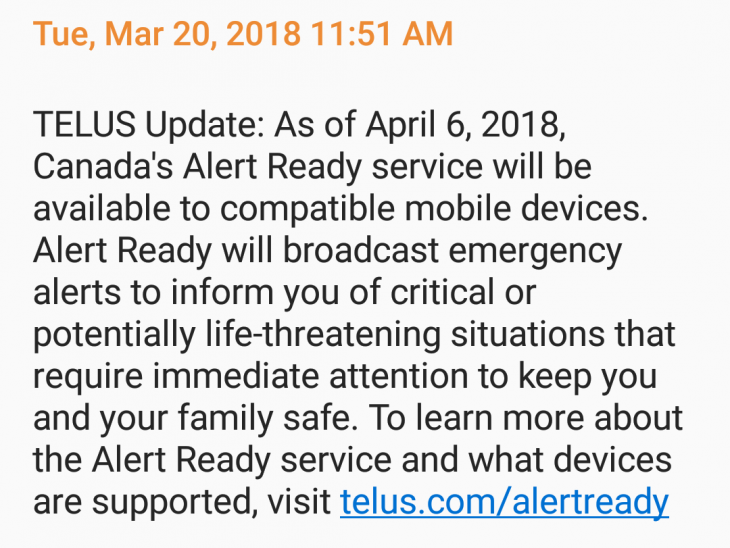
OTTAWA and GATINEAU – All wireless service providers must be ready and able to distribute wireless public emergency alert messages on their LTE networks in Canada by April 6, as was directed by the CRTC.
Emergency alert messages are issued by federal, provincial and territorial governments and emergency management officials to warn the public of imminent threats, such as fires, tornadoes, floods, water contamination and Amber Alerts.
Alerts received via mobile devices will contain the same alert tone as those distributed from the radio or television, plus trigger a unique vibration cadence. They will also include the information Canadians need for any action they should take. Carriers have been informing their customers of the new emergency service for the past two weeks (see photo).
The Commission added that nationwide public alerting tests will take place during Emergency Preparedness Week, set for May 6 – 12, to allow Canadians to become familiar the tone and vibration cadence of wireless public alerts (WPA). The alerts, which can be targeted to a specific area, will be sent to mobile devices connected to LTE networks, which the CRTC said are available to more than 98.5% of Canadians.
“Nothing is more important than making sure Canadians are informed in a timely matter about an imminent danger such as a tornado, wildfire or Amber Alert when a child’s life is in grave danger”, said CRTC chair and CEO Ian Scott, in a statement. “Mandatory distribution of public emergency alert messages on mobile devices will help do just that. Along with the wireless industry and our partners in federal, provincial and territorial governments, the CRTC has worked to provide Canadians with the emergency system they need to take appropriate safety measures if need be.”
The wireless public alerting standard adopted by Canada has already been adopted by governments including the European Union, the U.S, Israel, Chile and Japan.
Canadian broadcasters and television service providers have been distributing emergency alerts since 2015 through the Alert Ready system.
More information is available at Alert Ready.



